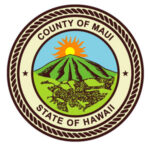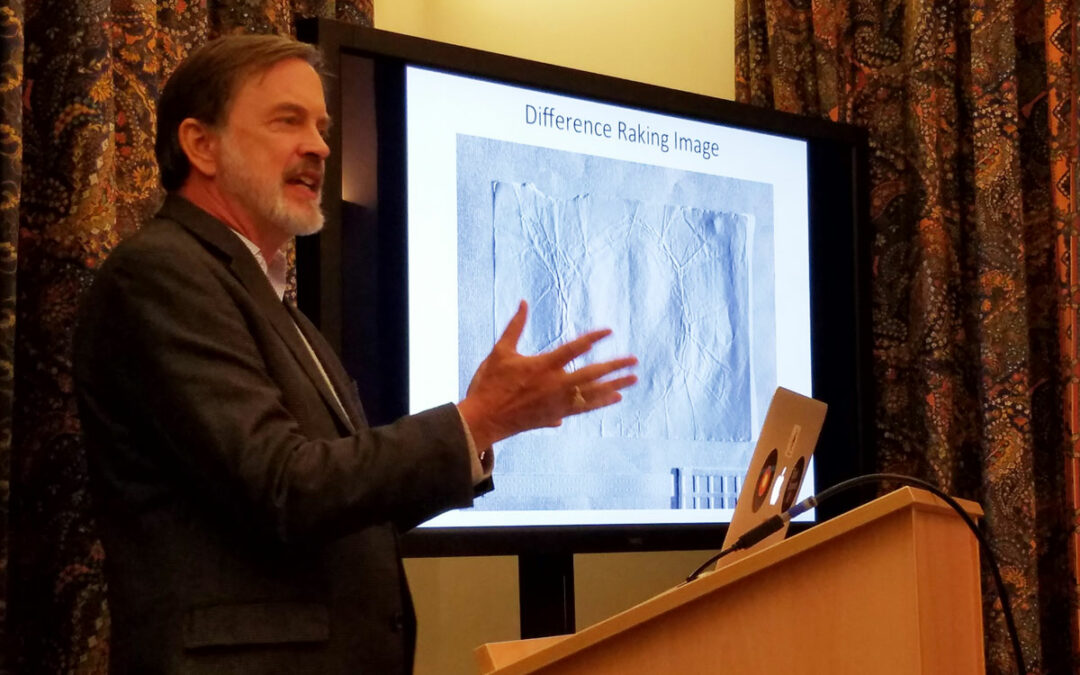
Feb 7, 2018 | Education
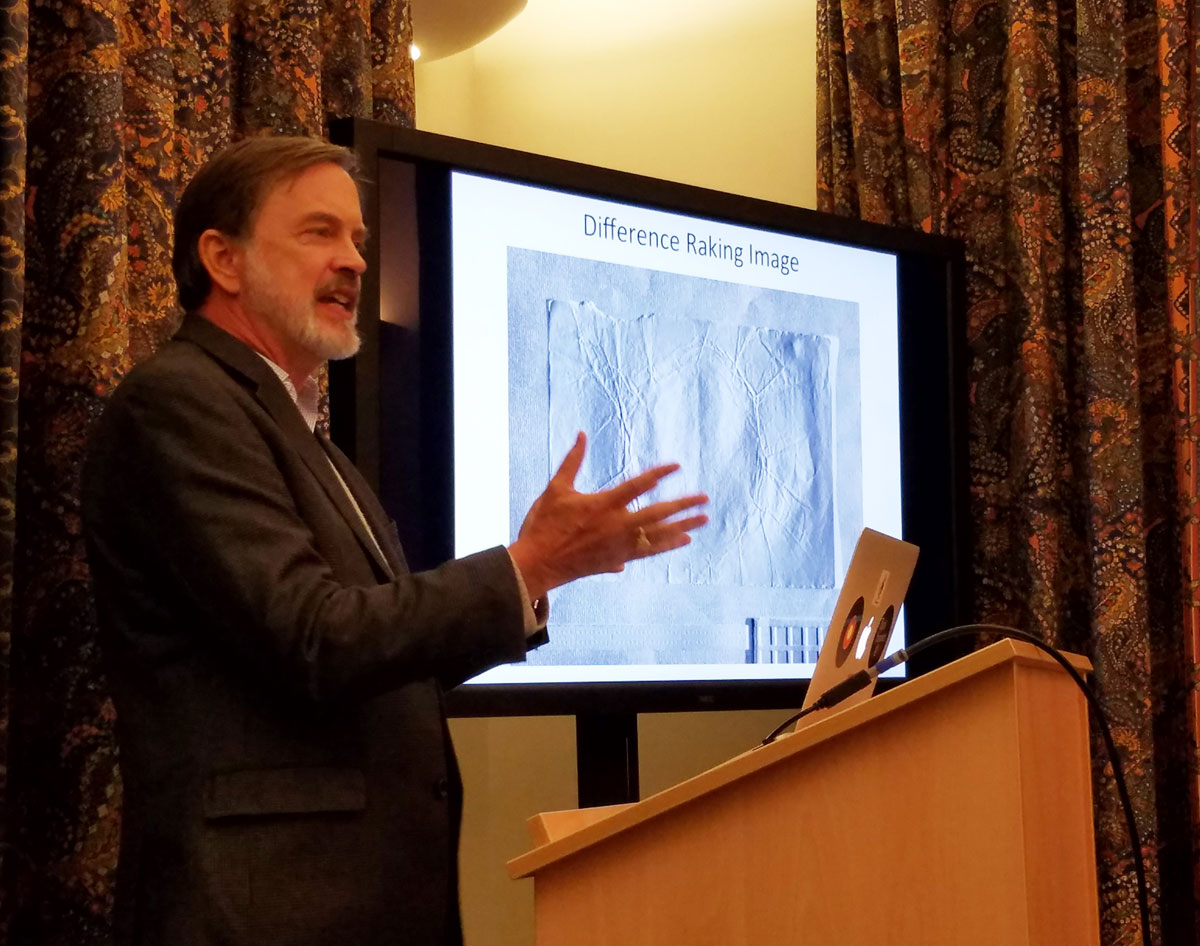
Dr. Keith Knox, retired Technical Advisor for the Space Surveillance Systems Branch of Air Force Research Laboratory in Kihei, has been involved in an extraordinary project. For more than 25 years, in his spare time, Knox has worked with an international team of scientists who travel to different parts of the world to recover writing on ancient documents. In this past year, he has traveled to libraries in Belfast, Oxford, Milan, Vienna, Berlin, and the south of France.
“Multispectral imaging, a technique for observing the Earth from satellites, can uncover the erased texts of ancient manuscripts too,” said Knox, whose expertise in this field has also taken him to India and Egypt. “In our manipulation of the digital images, we use these different spectral responses to separate the two writings and enhance the erased writing, making it easier for researchers to study.”
Knox’s work assists scholars to read the ancient manuscripts that have been erased, overwritten, damaged, or simply faded with time. In many cases, the writing is invisible to the eye, but not the camera. Knox’s contribution is the development of image processing software tools that process the multispectral data to reveal the text. His efforts are advancing both our historical understanding of the recovered texts and our scientific understanding of the multispectral techniques needed to make the erased texts legible again.
Among the discoveries made from his images include the 1871 diary of Dr. David Livingstone, the famous explorer of Africa, which was read for the first time since it was written 145 years ago. At St. Catherine’s Monastery in the Sinai Desert in Egypt, several discoveries have been made. “One scholar has been able to uncover new words in a manuscript written in Caucasian Albanian, a dead language spoken by no one in the world today,” Knox said. “This work is a chance to discover something that has been hidden for centuries and is otherwise lost to the world. To make a discovery of that magnitude is a thrill beyond measure!”
As a scientist, I relish the quest of working with old manuscripts to discover overwritten text from centuries earlier.
Dr. Keith Knox, Retired Technical Advisor, Air Force Research Laboratory, Kihei
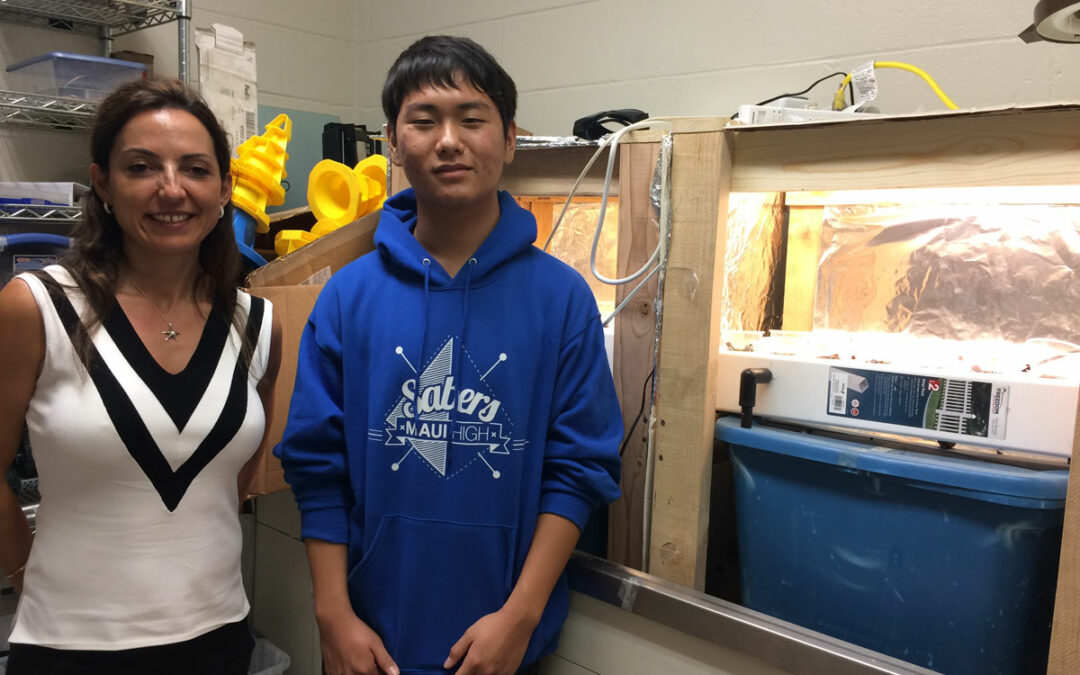
Jan 31, 2018 | Environment, Innovation, Stemworks
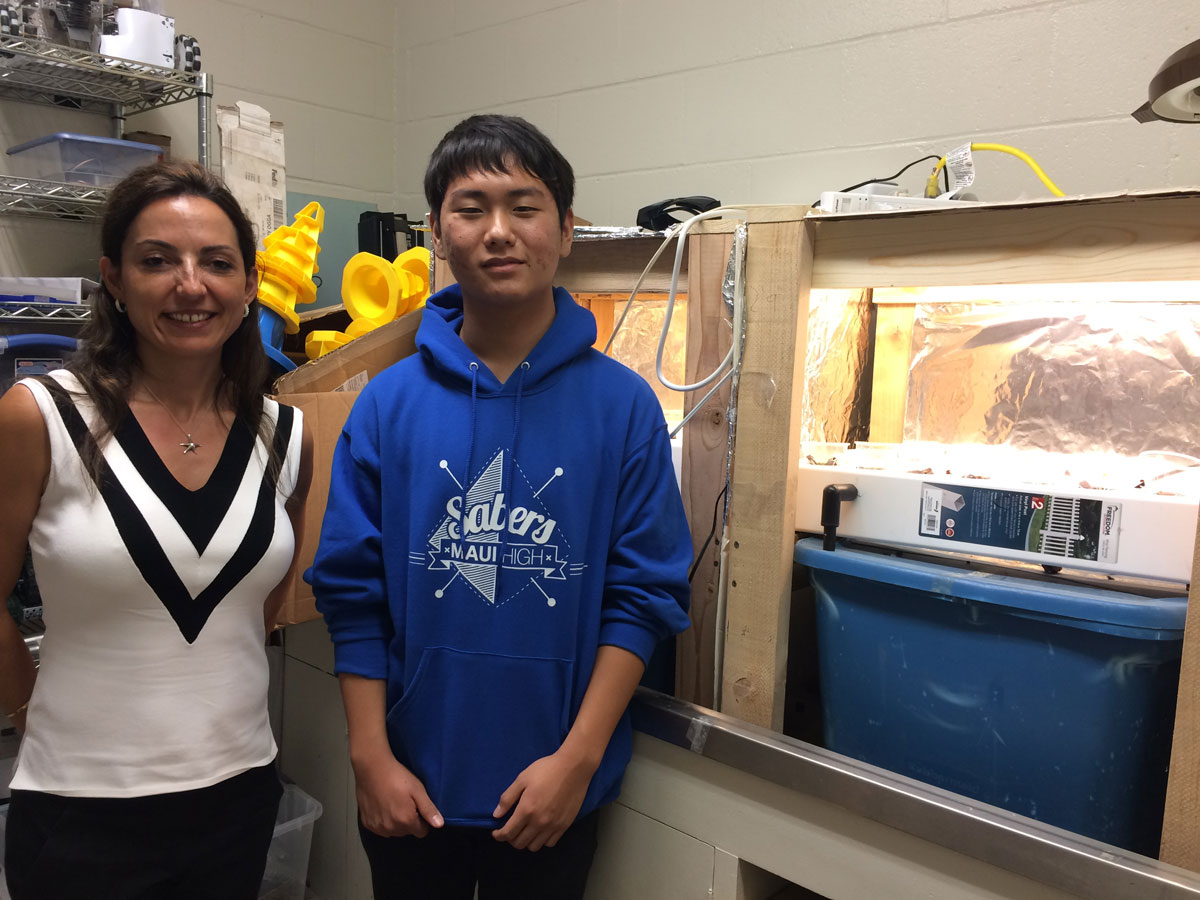
The University of Hawaii (UH) Educational Outreach Team and Maui Economic Development Board have long shared common goals for STEM (science, technology, engineering, and mathematics) education. Recently, UH-Manoa Physics Department hosted a group of three Maui High School students, Mary Chin, OneJae Lee, and Zain Jabber, at a Maui workshop to present their summer research findings on the effect of cosmic rays on Mars colonization. With the help of their project mentors, Dr. Veronica Bindi, UH-Manoa associate physics professor, Dr. J. D. Armstrong, UH Institute for Astronomy (IfA), and their Maui High science teacher, Keith Imada, the students investigated possible correlations between galactic cosmic rays and solar activity to determine the amount of radiation astronauts would encounter enroute to Mars and living there.
“Space radiation represents the major obstacle to manned missions to Mars,” said Bindi, who gave a presentation to Maui High students entitled, ‘When is the best time to go to Mars?’ “Radiation damages the DNA of the astronauts in irreversible ways. We are working with NASA to assess the amount of radiation astronauts would be exposed to, how to mitigate it using special shields, and the viability of food production on Mars.”
Mary Chin’s project was focused on the study of cosmic rays, building a low-cost muon detector and developing the software to operate it. Another student, OneJae Lee, designed and built his own hydroponic system to test the effects of space radiation on food plants. “Although it is difficult to replicate galactic cosmic rays in a laboratory, it is possible to test other high-energy radiation,” Lee explained. “I found many challenges to having the plants survive even with lower-energy ultraviolet-C rays.”
Zain Jabbar researched coronal holes caused by interacting magnetic fields on the sun and whether they are related to sunspot activity. “I looked for a connection to the solar cycle, comparing conditions when the sun is very active and when it is much less active. Greater solar activity can result in electrical grid blackouts around the world.”
I mimicked conditions on Mars using ultraviolet-C rays to study whether the light present on Mars could be used for plant growth without special filters.
OneJae Lee, Maui High School
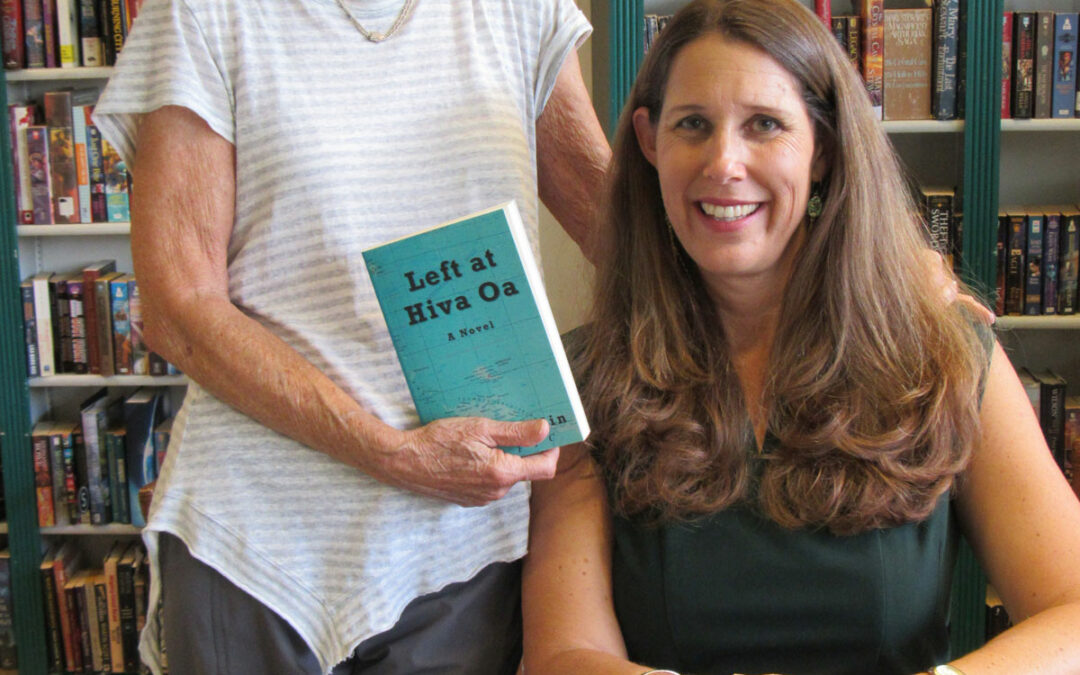
Jan 24, 2018 | Community
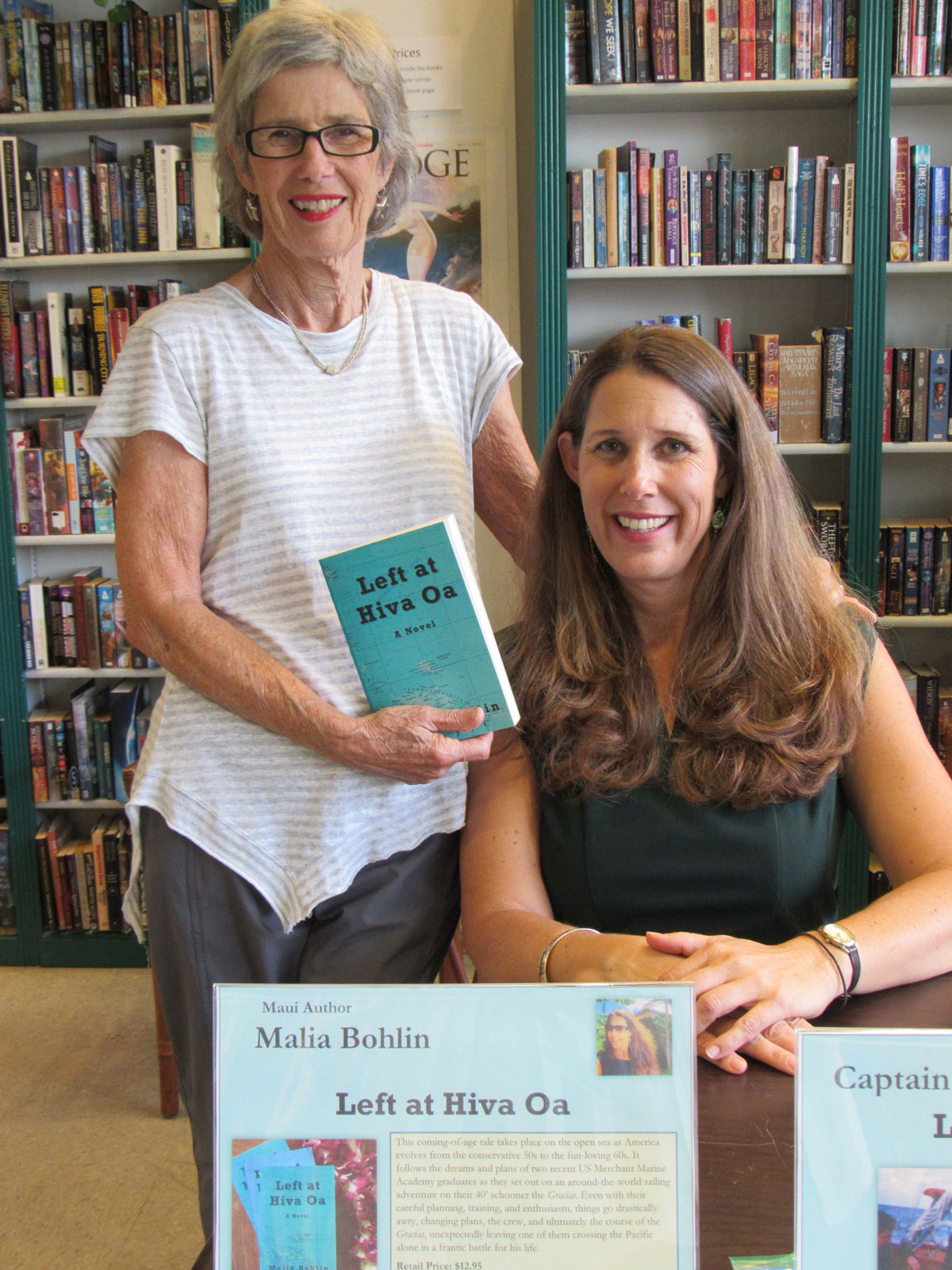
Maui author Malia Bohlin recently released her first novel, Left at Hiva Oa. Bohlin tells the dramatic story of her father, Ken Bohlin, who followed his dream of sailing around the world on the 40-foot schooner, the Gracias. Bohlin, a US Marine Merchant Academy graduate, started his adventure with other alumni. Even with their careful planning, training, and enthusiasm, things eventually went awry. Everything changed: the plans, the crew, and ultimately the course of the Gracias, leaving one of them to cross the Pacific, from the Marquesas Islands to Hawaii, alone.
“Though he was well-trained, life on the high seas brought Dad unforeseen challenges,” said Bohlin. “In a frantic battle for his life, he relied on his knowledge and faith to save him. Arriving on Maui in 1974, he worked for 15 years as the harbor pilot for Kahului Harbor. Later he served as captain for Kahului Harbor’s tug boat, the Joe Sevier. He was well known on the Maui waterfront and throughout Hawaii. His colleagues still remember him, talk about his seafaring journey, and have enjoyed reading the book.”
Malia’s mother, Jennifer, was amazed at how vividly the book portrays her husband’s life at sea. “Malia’s dad told her the various elements of his voyage and by re-telling his adventure she has memorialized him,” she said. “Ken passed away in 1993. He would be so proud!”
Diane DeVey, a fan of the book, said, “I was immersed in this novel from the first page. What captivated me about Captain Ken was his determination to live out his dream. His story is an inspiration to all.”
Malia Bohlin was born in Honolulu and raised on Maui. She attended Baldwin High School where she placed second in a state-wide creative writing contest during her junior year. At the University of Hawaii-Manoa, she was a reporter for the school newspaper, Ka Leo. In her Maui profession as a grant specialist, Bohlin has produced many fundraising proposals, speech presentations, and grant requests– raising millions of dollars for local and national nonprofit organizations. She is currently writing her next book.
Left at Hiva Oa is an incredible story of determination: the determination to dream, to stand by your principles, and to stay alive, when all you have is yourself.
Malia Bohlin, Author: Left at Hiva Oa
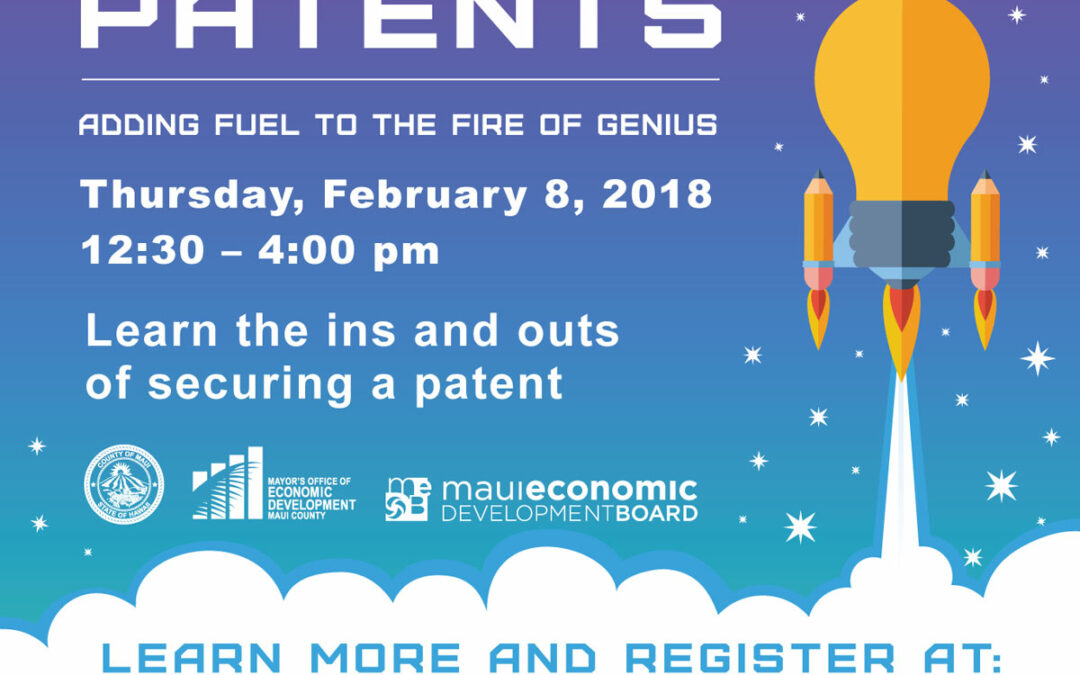
Jan 17, 2018 | Innovation
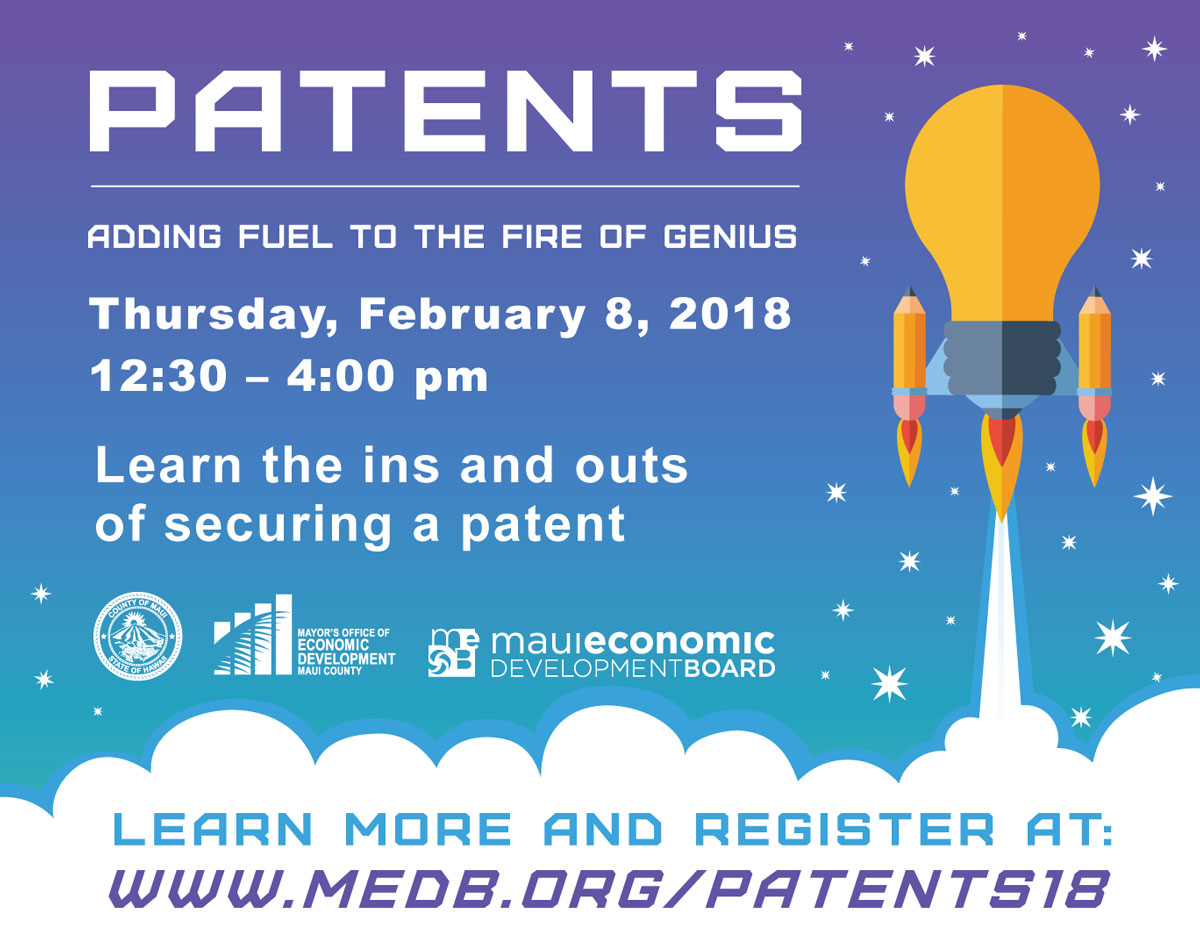
Don’t miss this opportunity to engage Palo Alto patent attorney, Dr. Victoria Brewster, in an informal round table discussion on the ins and outs of securing a patent. The seminar will cover patent basics, including putting early safeguards in place to protect rights to your innovations; applying for a patent; devising a patent strategy; and building a portfolio to help your startup reach and exceed its business objectives.
A sampling of the topics to be covered includes:
- What is a patent and what do I get with it
- How to prepare and apply for a patent (process, timeline, cost)
- What to expect during examination of a new patent application
- Best practices for developing a patent strategy
- Guidelines for building a portfolio
- Common pitfalls that may affect intellectual property rights
- And more!
Learn more and register at http://www.medb.org/patents18/
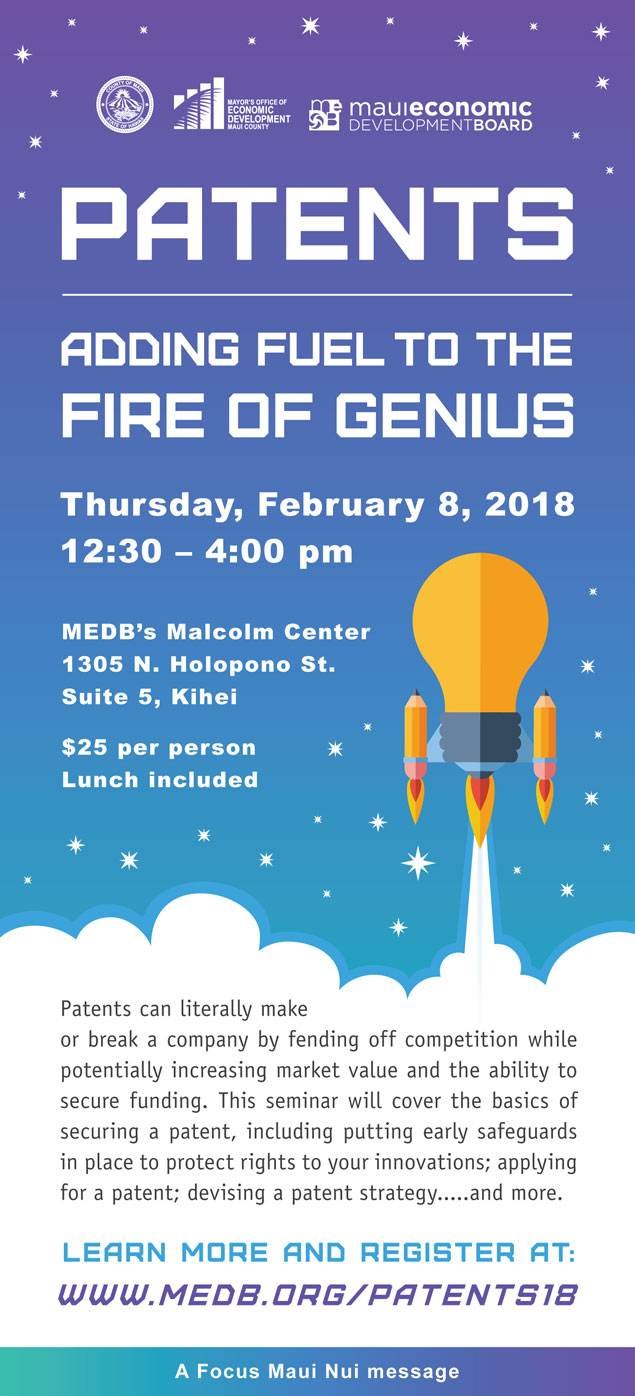
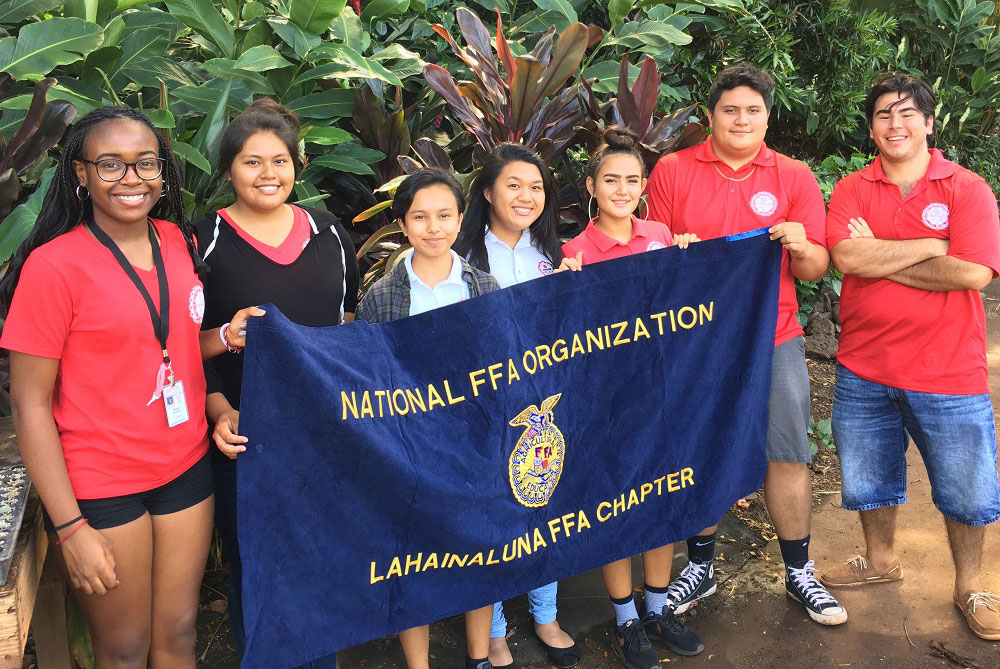
Jan 10, 2018 | Community, Sustainability

M’Chelle Aguinaldo, a senior at Lahainaluna High School, was elected and is serving as Secretary of the Hawai’i Chapter of Future Farmers of America (FFA) for 2017-2018. A student-led national organization, FFA is committed to fostering projects that increase awareness of the global importance of agriculture. FFA’s initiative complements Maui Economic Development Board’s (MEDB) vision of achieving a diversified Maui County economy, including agri-tech. Both MEDB and FFA encourage wise management of economic, environmental and human resources in the community, and promote teamwork, citizenship, and volunteerism. They teach that agriculture is more than planting and harvesting—it’s a science, it’s a business, and it’s an art.
“The Lahainaluna High School Agriculture Program’s mission is to help our community grow the next generation of young farmers,” Aguinaldo said. “As this year’s FFA State Secretary, I travel to state and national FFA meetings and assist in work-related activities at Lahainaluna. I also support Maui’s school garden programs with plant donations and other volunteer work.”
Aguinaldo continued, “At Lahainaluna we see a thriving and sustainable Hawaii. We maintain a pono lifestyle by having aloha for all, and by respecting the culture. We need the next generations of farmers. We also need to help drive Hawaii in the direction of becoming sustainable and help keep produce here. We’re working for a better future for Hawaii’s youth and economy.”
Lahainaluna Ag offers a variety of classes. Their facility consists of two classrooms, a shop, a greenhouse, multiple small and large fields, a plant nursery, and a Hawaiian garden. “The curriculum places a high emphasis on giving students as many visual and hands-on learning experiences as possible,” said Aguinaldo “We sell our produce to the community and at local farmers markets, to our school staff, to other Lahaina schools, and to local businesses. We also give back to our community by providing donations of produce and plants to school gardens, homeless shelters, senior housing complexes, and the Maui Food Bank.”
FFA students develop an appreciation for a farming career and other agriculture-related professions such as biologists, chemists, veterinarians, engineers and entrepreneurs.
M’Chelle Aguinaldo, Lahainaluna High School, 12th grade










